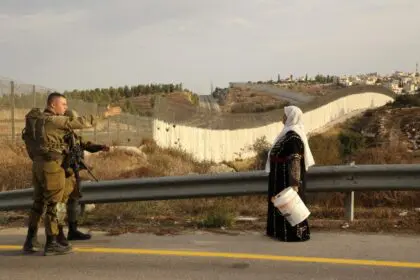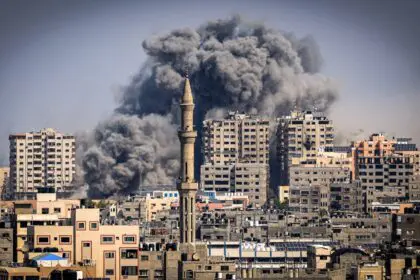Comprehensively covers the displacements and home demolitions during Palestinian-Israeli Conflict and its impact on Palestinian rights, and reports from human rights organisations.

Editorial Note
Displacements and home demolitions, as practiced by Israel, have gained increasing global attention. This section is part of our Human Rights & International Law coverage within the Palestinian-Israeli Conflict.
Displacement and Home Demolitions
Since 1948, Israel has used different measures to seize Palestinian land as an attempt to transfer it to state ownership, eventually evolving to the severe curtailment of Palestinian residential development.
House demolitions in the West Bank, including East Jerusalem, have been rising over the years. According to the United Nations Office for the Coordination of Humanitarian Affairs (UNOCHA), the Israeli authorities demolished, forced people to destroy, or seized at least 292 Palestinian-owned structures across the West Bank and East Jerusalem in the first quarter of 2021, a 121 percent increase compared to the same period the previous year. By the end of 2020, the UN agency reported 854 demolitions of Palestinian properties, more than double the 2017 figure when there was a dramatic decrease after a peak of 1,094 demolitions in 2016 in the preceding seven-year period. Destruction of Palestinian property has also taken place in Negev, southern Israel where thousands of Bedouins live in unrecognised communities. Statistics for the territory within the Green Line (Israel proper) are unavailable.
Demolitions and forced evictions have created a coercive environment that leaves Palestinians homeless, living in overcrowded conditions or forcing them to move. There are various reasons why demolitions take place in the oPts. One of the main examples of these is punitive and a form of collective punishment, according to human rights groups such as al-Haq and Btselem.
Demolished structures in the West Bank including East Jerusalem as of 23 November 2021. Source: OCHA
The Israeli authorities target the houses of so-called “suspected terrorists” or their family members, claiming it is a deterrent for further crimes. However, there is no evidence these measures work, and there must be clear and concise military justification for such actions, which otherwise constitutes a war crime as per the Geneva Conventions. Moreover, the policy is conducted almost exclusively against Palestinians, and in the past, the Israeli army banned the practice saying it sowed hate amongst the Palestinian population. Israel also sanctions demolitions for land-clearing operations, 57 percent of which target structures in the Israeli-controlled Area C (the other zones, A and B, are where the PA has limited self-governance).
The Israeli High Court has sanctioned demolitions in this area of buildings which Israel says are illegal and without Israeli-issued building permits, which are difficult to attain. Between 2016 and 2018, the Israeli Civil Administration in the West Bank approved less than 2 percent of construction permits from Palestinians in Area C — despite a severe housing crisis among the Palestinian population. As a result, many end up demolishing their own houses to avoid high fines and demolition fees.
Palestinians often resort to building in these areas without the paperwork out of duress — only 7 percent of Palestinians get permits despite making up 40 percent of the population in East Jerusalem, leaving an estimated 100,000 people whose homes are at risk of demolition. In addition, around 72 percent of Palestinians in the Jerusalem municipality live below the poverty line due to a lack of infrastructure and service investment. Demolitions remain high in areas close to Israeli settlements, or areas under threat of annexation like East Jerusalem and Hebron H2 (the eastern part, which includes the old city). They can be executed with little notice, particularly when done as a land clearing or military operation.
Many proposed demolitions have attracted high controversy, such as the Bedouin hamlet of Khan al-Ahmar, yet clearing this area has been at an impasse for years, causing restrictions on movement for the resident Jahalin community. However, NGOs say this clearance is to ensure that the controversial E1 settlement goes ahead, ultimately allowing the area that is the centre of the West Bank to be controlled by Israel, cutting the territory in half and preventing travel from one side to the other.
In addition, there are plans for a new highway that will go through the traditionally Palestinian neighbourhoods of Sur Baher, Silwan, Ras al-Amoud, the Mount of Olives, connecting them to the E1 bloc, with demolitions and seizures also occurring in this area.
Human Rights & Palestinian-Israeli Conflict
This article is part of our Human Rights & International Law coverage within the Palestinian-Israeli Conflict.
The Human Rights & International Law dossier on the Palestinian-Israeli Conflict meticulously documents the conflict, covering a wide range of topics, including treaties, human rights violations, policies that contravene international law, and more.





